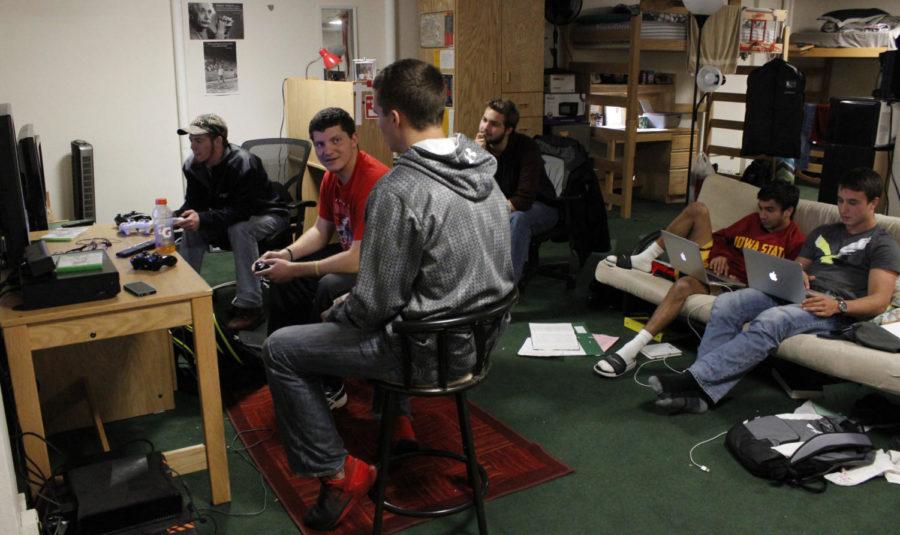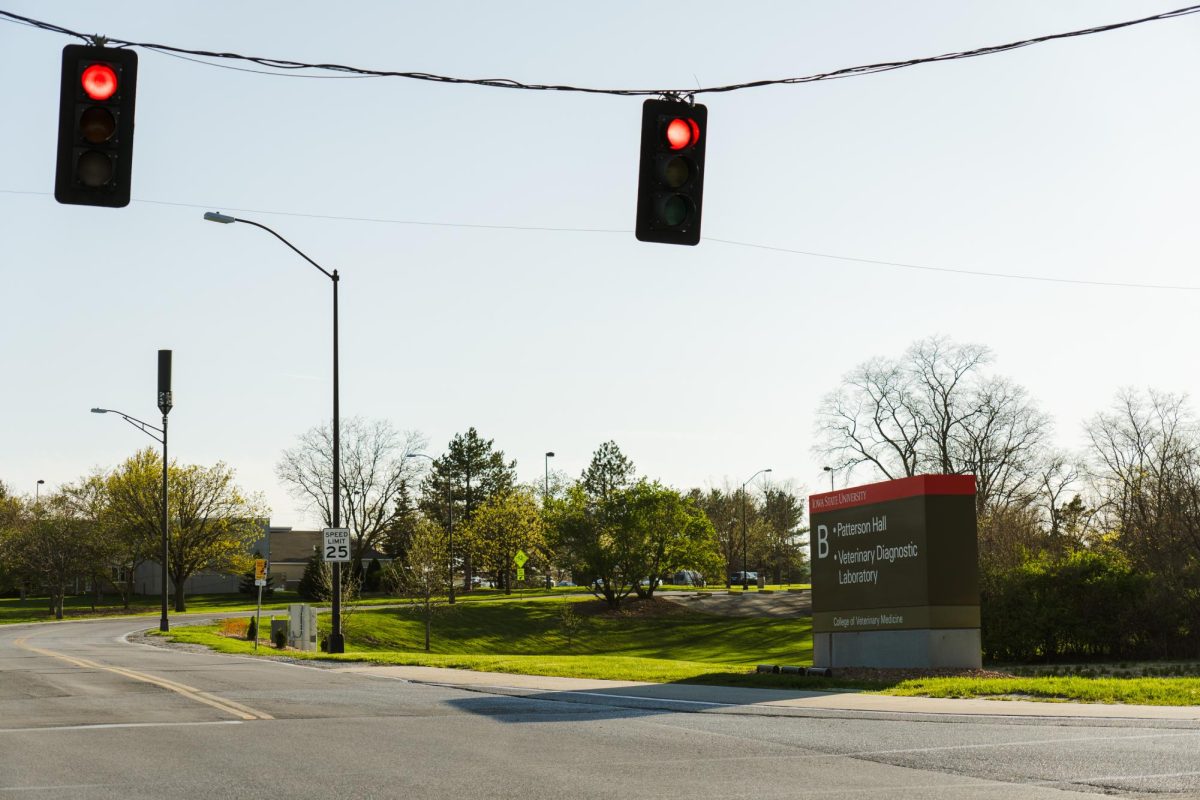Converting dens to dorms
Caitlin Ellingson/Iowa State Daily
Increased enrollment at Iowa State has forced students to live in the dens of most dorms on Iowa State’s campus. Anywhere from three to four students can be placed in a dorm.
October 15, 2014
For roommates Logan West and Andrew Mettry, the only negative side to their unique housing arrangement is having to separate from their roommates and move to a new dorm at the end of the semester.
West, a freshman in agriculture business, lives in a den in Friley with three other people. West and Mettry, freshman in chemical engineering, are two of 401 students assigned housing in the dens at the beginning of the academic year.
Between the fall semesters of 2013 and 2014 alone, the on-campus living population increased by 9.8 percent. Due to these increases in occupancy as well as overall enrollment, students who cannot be offered housing in a dorm room are placed in dens until a room becomes available.
The Department of Residence has chosen to use dens as temporary housing to accommodate the increase in occupancy.
“Our focus is in taking care of our students,” said Brittney Rutherford, program coordinator for the Department of Residence. “At the core of every decision we make, it’s ‘is this going to serve our students?’, and the den space, that was one way to do that.”
Rutherford said the dens are not ideal, but the overall purpose is to provide an on-campus living experience for students.
Dens vary in size from dorm-to-dorm, and while having two to four people living in one space might sound upsetting to some people, to West, Mettry and their two roommates, living in the dens was a better alternative to living in a dorm room.
“We all graduated [high school] together,” West said.
He and his three friends were originally placed in different dorms, but chose to move to the dens to start the semester off together.
“We woke up at like five in the morning [on vacancy day] and we were looking through rooms and stuff to see if we would be able to room together,” said Tyler Brock, freshman in agriculture studies and West’s roommate.
For West and his friends, living in the den was optional. After two months living together, they have a single complaint.
“I think it’s great other than the fact that we have to move out,” West said.
An overall positive opinion on den living is not uncommon. Students living in the dens have made connections and friendships in their current dorm but may have to move across campus at the turn of the semester.
Many students believe that once the semester is over they’re on their own in terms of living arrangements. This is not the case, according to Rutherford.
The process of switching from dens to dorm rooms has run smoothly in the past, with students dropping out and moving at the end of the semester, opens up dorm room positions for those living in the dens, Rutherford said.
Students can use AccessPlus to check if dorm rooms are available, and although the possibility of not having enough openings exists, Rutherford said students would not be removed from the dens.
From 2005 to 2013, on-campus occupancy grew by 42.5 percent, while enrollment grew by 29 percent.
Accommodating this growth has caused the Department of Residence to change the single rooms in Wallace and Wilson halls to doubles, use den space and add 720 beds in Frederiksen Court. Legacy tower has also been leased, as well as Maricopa and Walton in West Ames.
“We also have permission from the Board of Regents to plan for a new residence hall,” Rutherford said. “That would be located near Buchanan hall.”
While the process of building a new residence hall requires many stages of approval, Rutherford says the building is set to be available for the 2016-2017 school year if all goes smoothly.
However, until then, den space is being used to give students the experience and benefits of on-campus living. West and his roommates, while thoroughly enjoying their time, have started to look towards options for next semester, as well as next year.
Housing is currently contracted on an August to May basis, but Mettry said that a semester-based contract would be more beneficial. If this were the case, he and his roommates would be searching for apartments to live together in as opposed to separate dorms.
Rutherford said the DOR realizes the inconvenience of having to start over in a different dorm at the beginning of spring semester. A trial is currently being conducted in Linden and Maple Halls, wherein students placed in dens will be able to stay there for the whole year.
The trial will provide feedback the DOR can use when determining how they can better the system, and whether the current den program is effective or not. The DOR will then be able to make the necessary changes to better serve the student body.
While the DOR is working on changes to improve on-campus living, students living in dens will still have to find permanent housing before January. Being close friends with each other as well as having made close friends in their hall, West and his roommates are reluctant to separate.
West said life in his den has been better than expected.
“I wouldn’t change anything,” West said.

















